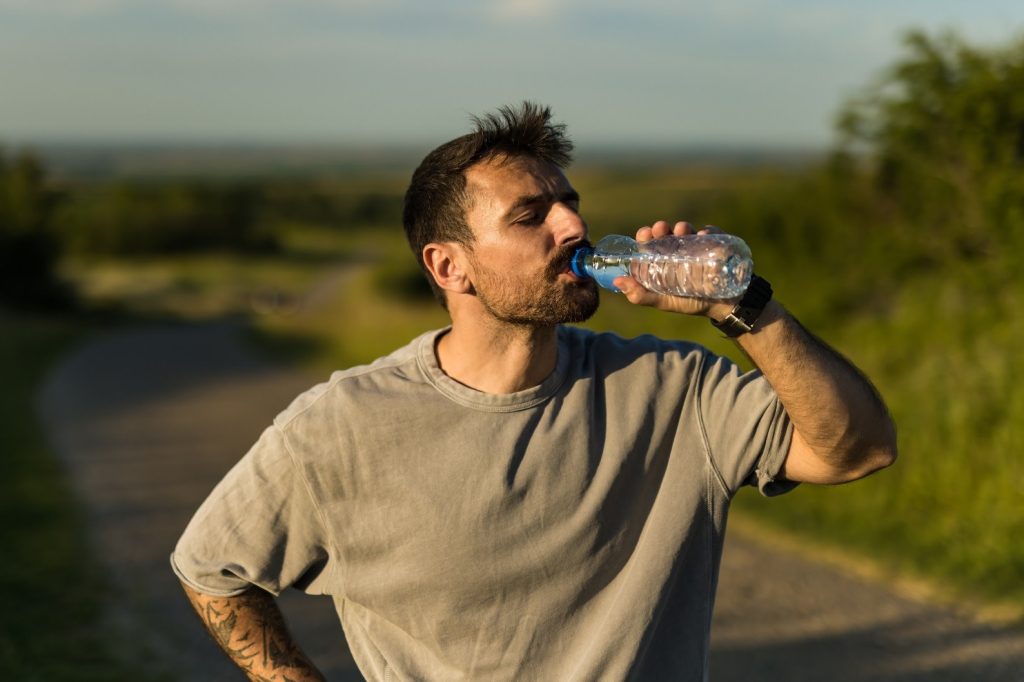Hydration Strategies for Hot Climates: Staying Cool and Healthy During Summer

The Importance of Staying Hydrated
During the blistering summer months, staying hydrated is not just a choice; it’s a necessity. In hot climates, the combination of high temperatures and increased physical activity can lead to significant fluid loss. Proper hydration is vital for maintaining health and well-being, as it plays an essential role in processes such as regulating body temperature, keeping joints lubricated, and delivering nutrients to cells.
One significant factor to consider when assessing hydration needs is the climate where you live. For instance, states like Arizona and Nevada are known for their dry heat, which can increase the rate of fluid loss through sweat. Conversely, in humid states like Florida, while sweating may not feel as intense due to heat, the body can still become dehydrated quickly. Understanding your local weather conditions can help tailor your hydration strategies effectively.
Key Hydration Strategies to Consider
- Drink Water Regularly: Aim to drink at least eight 8-ounce glasses of water daily, and more if you’re active or exposed to extreme heat. To ensure you stay on track, consider carrying a reusable water bottle with you wherever you go.
- Choose Hydrating Foods: Incorporate fruits and vegetables like watermelon, cucumber, and oranges into your meals for added fluids. For example, making a refreshing watermelon salad not only boosts hydration but also provides essential vitamins and minerals.
- Avoid Excessive Caffeine and Alcohol: These beverages can lead to dehydration, so consume them in moderation. If you enjoy iced coffee or cocktails during summer gatherings, balance them with plenty of water to maintain hydration levels.
Understanding how to stay hydrated effectively will empower you to enjoy summer activities while keeping yourself cool and healthy. Each person’s needs may vary, influenced by factors like age, weight, and level of physical activity. For instance, athletes may require significantly more fluids compared to someone leading a sedentary lifestyle. Therefore, tuning into your body’s signals, such as thirst and urine color, is crucial in assessing hydration levels.
To deepen your understanding of hydration, explore various hydration strategies to ensure that you don’t just survive the summer heat but thrive in it. In addition to water, consider electrolyte-replenishing drinks, especially if you are exercising outdoors or involved in labor-intensive activities. Additionally, emerging research suggests that hydration can also be supported by beverages that contain essential minerals like potassium and sodium.
By staying educated about your hydration needs, you can ensure that you remain vigorous and refreshed, fully enjoying all that summer has to offer.

DISCOVER MORE: Click here to learn about the benefits of flexibility exercises
Effective Hydration Techniques for Summer
In the sweltering heat of summer, understanding how to hydrate optimally can mean the difference between enjoying the season and suffering from heat-related ailments. The quest for staying cool goes beyond just drinking water; it encompasses a range of strategies designed to maximize fluid intake and retention. As individuals living in hot climates grapple with the relentless sun, being equipped with effective hydration strategies becomes paramount for preserving overall health.
One of the best practices to adopt is to drink water consistently throughout the day. Instead of waiting until you feel thirsty, make it a habit to sip water regularly, especially when engaging in outdoor activities. Keeping a reusable water bottle nearby can serve as a constant reminder to hydrate. Research suggests that the importance of hydration cannot be understated, as even mild dehydration can lead to fatigue, dizziness, and decreased cognitive performance. During summer, it’s recommended to increase water intake to about 3.7 liters for men and 2.7 liters for women per day, according to the National Academies of Sciences, Engineering, and Medicine.
Utilize Electrolytes to Replenish Lost Salts
While water is essential, adding electrolytes to your hydration plan can significantly boost your ability to recover from heat exposure. Electrolyte drinks help replace the sodium, potassium, and magnesium lost through sweat, particularly during intense workouts or prolonged outdoor activities. These minerals play a critical role in maintaining fluid balance, nerve function, and muscle health. Popular options include sports drinks and coconut water; however, be mindful of their sugar content. Always look for low-sugar versions that still provide essential electrolytes.
- Choose the Right Time to Hydrate: Drink fluids before, during, and after activities. This proactive approach helps optimize hydration levels, especially on hot days.
- Incorporate Hydration Breaks: Schedule regular breaks during outdoor activities to consume fluids, allowing your body to recover and regulate temperature.
- Monitor Your Body: Pay close attention to your body’s cues. Dark yellow urine is often a sign of dehydration, signaling the need for more fluids.
In addition to water and electrolyte beverages, eating hydrating foods is a fun and efficient way to enhance your fluid intake. Foods with high water content, such as strawberries, celery, and lettuce, not only contribute fluids but are also nutrient-rich options that can sustain your energy levels. Creating refreshing snacks, like frozen fruit pops or smoothies, can also make hydration enjoyable—especially for children. These strategies not only nourish the body but also help combat the lethargy that often accompanies hot weather.
As we delve further into summer hydration, we’ll uncover additional strategies tailored to different lifestyles and activity levels, ensuring everyone can beat the heat while maintaining optimal health. With the right approaches, staying hydrated becomes a simple yet effective adventure in self-care.
Hydration Strategies for Hot Climates: Staying Cool and Healthy During Summer
As temperatures rise, maintaining adequate hydration becomes crucial to combatting heat-related health issues. In arid and sweltering environments, the body’s requirement for fluids increases significantly. Understanding how to hydrate effectively can be the difference between vitality and discomfort.
| Hydration Methods | Benefits |
|---|---|
| Regular Water Intake | Ensures proper body temperature regulation and optimal organ function. |
| Electrolyte-Infused Drinks | Replenishes essential salts lost through sweat, aiding in muscle function. |
| High-Water Content Foods | Naturally boosts hydration levels; fruits and vegetables like watermelon and cucumbers are excellent choices. |
| Scheduled Hydration Practices | Creates a consistent habit that prevents dehydration, especially in high-heat conditions. |
Incorporating these hydration strategies can significantly lower the risk of heat exhaustion and heatstroke. Each method offers unique benefits that enhance both physical performance and overall well-being during the grueling summer months. Stay proactive about your hydration needs to maximize comfort and health in hot climates.
DISCOVER MORE: Click here to delve into the power of creative expression
Hydration Practices for Outdoor Activities
For those who enjoy outdoor activities during the summer months, it’s crucial to implement hydration practices that cater specifically to increased physical exertion under the sun. Outdoor enthusiasts, whether they’re hiking, biking, or participating in sports, often lose significant amounts of fluid and electrolytes through sweat. Research indicates that engaging in vigorous physical activity can increase fluid needs to as much as 1.0 to 1.5 liters per hour of exercise, depending on the intensity and ambient temperature.
Pre-Hydration: Preparing Your Body
Before heading out for a day in the sun, it’s essential to pre-hydrate. Drinking 16-20 ounces of water approximately two hours prior to activity can enhance your body’s ability to manage heat stress. This practice ensures your body starts at an optimal level of hydration, lowering the risk of heat-related complications. Also, try incorporating a small snack rich in carbohydrates along with your fluid intake; this can provide a sustained energy source for your activities.
Hydration During Activity: Techniques to Remember
When it comes to staying hydrated during outdoor activities, timing and consistency are key. A good rule of thumb is to drink about 7-10 ounces of fluid every 10-20 minutes while exercising, particularly in extreme heat. Utilizing a hydration pack or belt can make it easier to sip fluids regularly without interrupting your activity. For competitive athletes, incorporating electrolyte-rich beverages during long sessions is integral to maintaining performance and avoiding fatigue.
Post-Activity Rehydration: Refueling and Recovery
Replenishing fluids after physical exertion is just as critical as hydration before and during activity. Consuming 16-24 ounces of fluid for every pound lost during exercise is a practical guideline for rehydrating effectively. Combine this with protein-rich snacks to help with muscle recovery. Foods like Greek yogurt, nuts, or a protein bar can be excellent supplements to your hydration routine. Additionally, keeping close attention to any signs of dehydration, such as headaches or dizziness, will give you insight into your hydration status and overall health.
Adapting Hydration for Various Age Groups
Hydration strategies should also consider various age groups, particularly for children and the elderly, who may have different hydration needs. Children are often preoccupied with play and may forget to drink water, leading to dehydration more quickly. Parents can encourage hydration by allowing kids to choose their favorite flavored water or prepare fun, hydrating fruit-infused waters. For elderly individuals, it’s vital to incorporate hydrating fluids into their daily routines. Adding hydration reminders throughout the day may improve overall fluid intake for older adults who may naturally consume less water.
Incorporating these diverse hydration strategies ensures that individuals engaging in outdoor summer activities can enjoy their time safely and healthily. With the right preparation and practices, staying hydrated becomes an integral and enjoyable part of summer adventures.
DIVE DEEPER: Click here to discover the importance of rest days
Conclusion: Embracing the Heat with Smart Hydration
The sweltering summer months present unique challenges to maintaining hydration, especially in hot climates. As we’ve explored, effective hydration strategies are essential not only for enhancing performance during outdoor activities but also for safeguarding health. Recognizing the importance of pre-hydration, consistent fluid intake during activities, and strategic post-activity replenishment can significantly affect your ability to cope with heat stress. With fluid losses potentially soaring to a staggering 1.0 to 1.5 liters per hour, particularly for active individuals, staying informed and prepared is paramount.
Additionally, accommodating hydration needs across age groups, especially for children and the elderly, adds another layer of consideration. Encouraging children to drink water, perhaps through fun infused flavors, can ensure they remain hydrated while playing outdoors. For our elder population, integrating hydration reminders and easily accessible fluids can promote better health outcomes. It’s a collective responsibility to ensure that everyone, regardless of age, has access to essential hydration.
Ultimately, as we embrace the joys of summer, the key lies in being proactive rather than reactive in our hydration practices. Understanding how to navigate the fine line between fun and safety during heat waves can lead to delightful, memorable experiences. By adopting these hydration strategies, individuals can enjoy their time outdoors while ensuring their well-being, paving the way for a healthier, cooler summer. Dive deeper into your personal hydration needs and make this summer not only enjoyable but also resilient against the summer heat.


